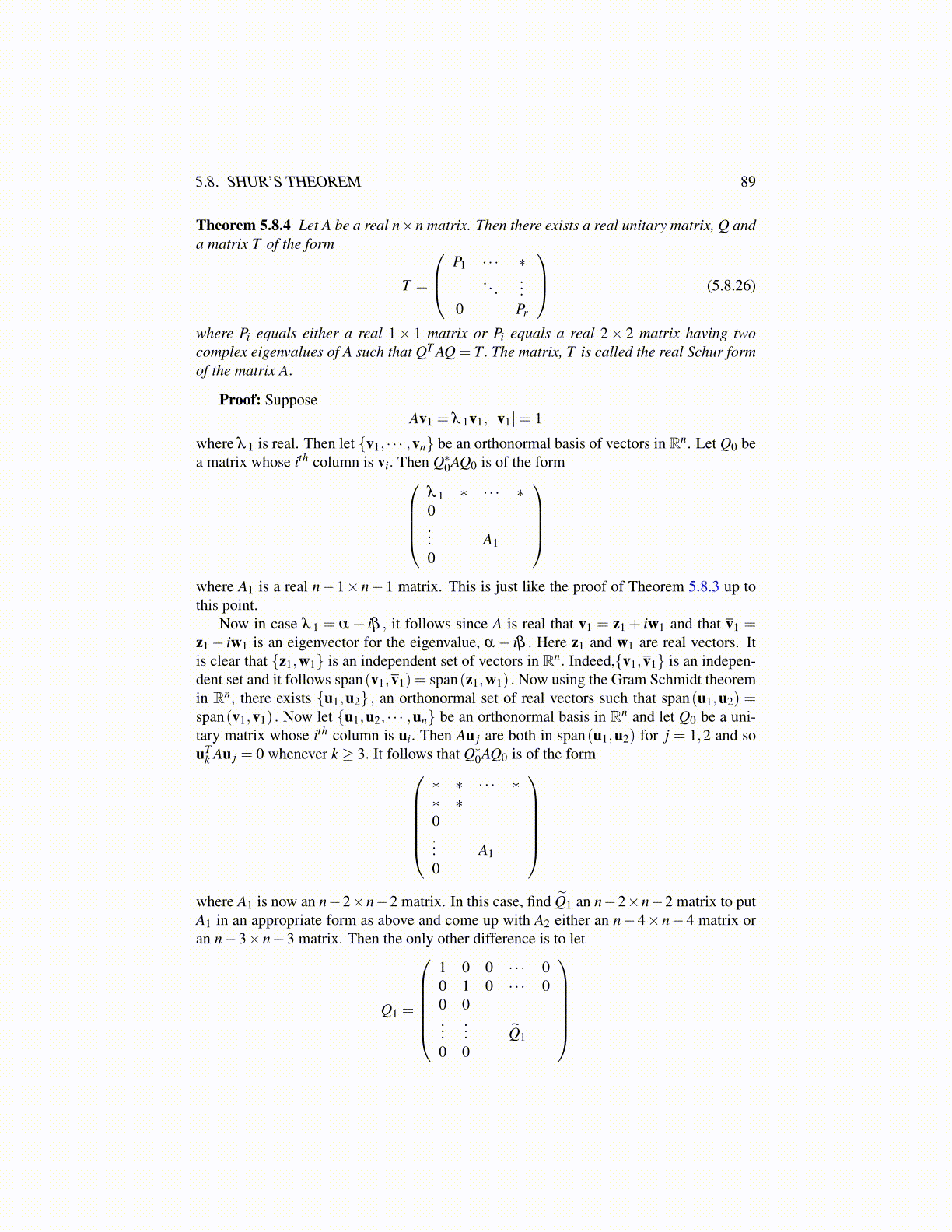
5.8. SHUR’S THEOREM 89
Theorem 5.8.4 Let A be a real n×n matrix. Then there exists a real unitary matrix, Q anda matrix T of the form
T =
P1 · · · ∗. . .
...0 Pr
(5.8.26)
where Pi equals either a real 1× 1 matrix or Pi equals a real 2× 2 matrix having twocomplex eigenvalues of A such that QT AQ = T. The matrix, T is called the real Schur formof the matrix A.
Proof: SupposeAv1 = λ 1v1, |v1|= 1
where λ 1 is real. Then let {v1, · · · ,vn} be an orthonormal basis of vectors in Rn. Let Q0 bea matrix whose ith column is vi. Then Q∗0AQ0 is of the form
λ 1 ∗ · · · ∗0... A10
where A1 is a real n− 1× n− 1 matrix. This is just like the proof of Theorem 5.8.3 up tothis point.
Now in case λ 1 = α + iβ , it follows since A is real that v1 = z1 + iw1 and that v1 =z1− iw1 is an eigenvector for the eigenvalue, α − iβ . Here z1 and w1 are real vectors. Itis clear that {z1,w1} is an independent set of vectors in Rn. Indeed,{v1,v1} is an indepen-dent set and it follows span(v1,v1) = span(z1,w1) . Now using the Gram Schmidt theoremin Rn, there exists {u1,u2} , an orthonormal set of real vectors such that span(u1,u2) =span(v1,v1) . Now let {u1,u2, · · · ,un} be an orthonormal basis in Rn and let Q0 be a uni-tary matrix whose ith column is ui. Then Au j are both in span(u1,u2) for j = 1,2 and souT
k Au j = 0 whenever k ≥ 3. It follows that Q∗0AQ0 is of the form∗ ∗ · · · ∗∗ ∗0... A10
where A1 is now an n−2×n−2 matrix. In this case, find Q̃1 an n−2×n−2 matrix to putA1 in an appropriate form as above and come up with A2 either an n−4×n−4 matrix oran n−3×n−3 matrix. Then the only other difference is to let
Q1 =
1 0 0 · · · 00 1 0 · · · 00 0...
... Q̃10 0